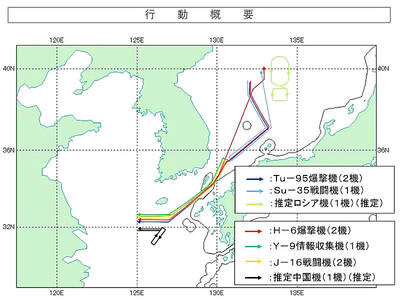Surprised scientists say that typhoons that hit Taiwan unleash long, slow earthquakes, a phenomenon that may save it from more devastating temblors.
Seismologists installed movement sensors in boreholes at depths of 200m to 270m in eastern Taiwan, monitoring a spot where two plates, the Philippine Sea Plate and the Eurasian plate, bump and jostle in an oblique, dipping fault.
Over five years, researchers saw a remarkable correlation between tropical storms and “slow” earthquakes, a seismic beast first identified three decades ago.
Slow quakes entail a slippage in the fault that unfolds progressively over hours or days, rather than a sudden, violent release of the kind that destroys buildings and lives.
The sensors noted 20 such slow earthquakes, 11 of which coincided with typhoons, during the study period.
The 11 quakes were all stronger and characterized by more complex seismic waveforms than other “slow” events.
“These data are unequivocal in identifying typhoons as triggers of these slow quakes. The probability that they coincide by chance is small,” said coauthor Alan Linde of the Carnegie Institution for Science in Washington.
A typhoon causes a fall in atmospheric pressure — and the researchers suggest that this in turn reduces pressure on the land over the fault.
As a result, one side of the fault lifts slightly, causing the pressure that has been building up inside to be released.
“This fault [in Taiwan] experiences more or less constant strain and stress buildup,” Linde said in a press release.
“If it's close to failure, the small perturbation due to the low pressure of the typhoon can push it over the failure limit. If there is no typhoon, stress will continue to accumulate until it fails without the need for a trigger,” he said.
The typhoon does not work as a seismic trigger on faults that lie on the seabed because water moves into the area, dampening out any difference in pressure, the authors theorize.
Often considered a curse, typhoons — for Taiwan — could in fact could be a blessing.
A storm could act as a pressure valve, preventing strain from building up to the point where the fault ruptures devastatingly.
The Nankai Trough in southwestern Japan also lies on the convergence of the Philippine Sea and Eurasian plates.
The plates are converging at a rate of about 4cm per year, which is about half that of the activity in Taiwan.
In theory, Taiwan should be more vulnerable than the Nankai Trough because of the greater slippage, but the record shows that it has had no great earthquakes and relatively few large quakes, Linde said.
By comparision, the Nankai Trough is capable of unleashing a true monster, a magnitude-8 earthquake, every 100 to 150 years.
The paper, published in the British journal Nature, was written by a team led by Liu Chi-ching (劉啟清) of the Institute for Earth Sciences at Academic Sinica.

The Mainland Affairs Council (MAC) on Friday condemned Chinese and Russian authorities for escalating regional tensions, citing Chinese warplanes crossing the Taiwan Strait’s median line and joint China-Russia military activities breaching South Korea’s air defense identification zone (KADIZ) over the past two days. A total of 30 Chinese warplanes crossed the median line of the Taiwan Strait on Thursday and Friday, entering Taiwan’s northern and southwestern airspace in coordination with 15 naval vessels and three high-altitude balloons, the MAC said in a statement. The Chinese military also carried out another “joint combat readiness patrol” targeting Taiwan on Thursday evening, the MAC said. On

The Mainland Affairs Council (MAC) yesterday confirmed that Chinese students visiting Taiwan at the invitation of the Ma Ying-jeou Foundation were almost all affiliated with the Chinese Communist Party (CCP). During yesterday’s meeting convened by the legislature’s Foreign Affairs and National Defense Committee, Democratic Progressive Party (DPP) Legislator Michelle Lin (林楚茵) asked whether the visit was a way to spread China’s so-called “united front” rhetoric, to which MAC Deputy Ministry Shen You-chung (沈有忠) responded with the CCP comment. The MAC noticed that the Chinese individuals visiting Taiwan, including those in sports, education, or religion, have had increasingly impressive backgrounds, demonstrating that the

MILITARY EXERCISES: China is expected to conduct more drills in the region after President William Lai’s office announced he would stopover in Hawaii and Guam China is likely to launch military drills in the coming days near Taiwan, using President William Lai’s (賴清德) upcoming trip to the Pacific and scheduled US transit as a pretext, regional security officials said. Lai is to begin a visit to Taipei’s three diplomatic allies in the Pacific on Saturday, and sources told Reuters he was planning stops in Hawaii and the US territory of Guam in a sensitive trip shortly after the US presidential election. Lai’s office has yet to confirm details of what are officially “stop-overs” in the US, but is expected to do so shortly before he departs, sources

Tasa Meng Corp (采盟), which runs Taiwan Duty Free, could be fined up to NT$1 million (US$30,737) after the owner and employees took center stage in a photograph with government officials and the returning Premier12 baseball champions at Taiwan Taoyuan International Airport on Monday evening. When Taiwan’s national baseball team arrived home fresh from their World Baseball Softball Confederation Premier12 championship victory in Tokyo, Vice President Hsiao Bi-khim (蕭美琴) was at the airport with Chinese Professional Baseball League commissioner Tsai Chi-chang (蔡其昌) to welcome back the team. However, after Hsiao and Tsai took a photograph with the team, Tasa Meng chairwoman Ku